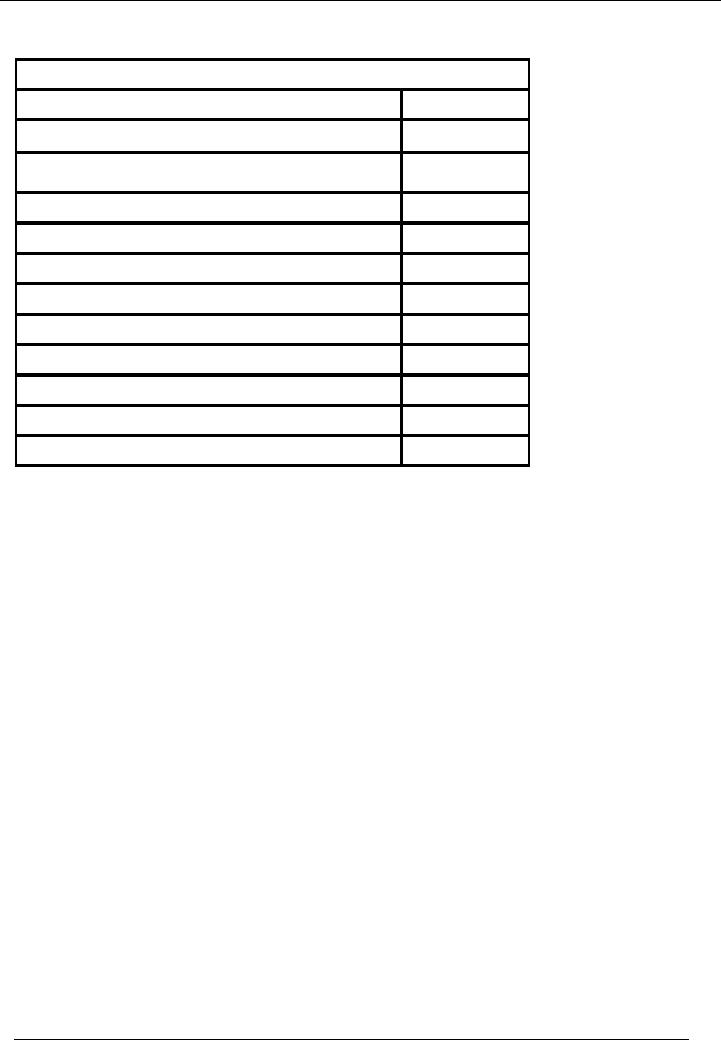 |
Basic Concepts of Business: capital, profit, budget |
| << Introduction to Financial Accounting |
| Cash Accounting and Accrual Accounting >> |

Financial
Accounting (Mgt-101)
VU
Lesson-2
Learning
Objective
�
The
evolution of accounting started in the
previous lecture continues with a slight
emphasis on how
actual
record keeping started. In addition,
some basic concepts like
capital, profit, and budget
are
introduced.
Different
Types of Business Entities
�
Commercial
Organizations (Profit Oriented)
o Sole
proprietor
o Partnership
o Limited
companies
�
Non-Commercial
Organizations (Non-Profit Oriented)
o NGO's
(Non-government Organizations)
o Trusts
o Societies
The
Basic Concept of Record
Keeping
�
We can
maintain a diary of transactions and note
the daily transactions like sale,
purchase etc. in it.
Problems
Faced in Maintaining Diary of
Transactions
�
How
will we come to know the
income and expenses from
various sources?
�
We
only have a sheet / page on
which daily transactions are
listed.
�
We do
not know which product is
selling better and which is
not.
Available
Alternate
�
One
can go through all the transactions at
the end of the month and
note the different types
of
transactions
on different pages.
�
So
that every page gives
total for a different type of
transaction like sales of
different products
and
expenses
of different types
4

Financial
Accounting (Mgt-101)
VU
Diary
of Transactions
Transactions
of Jan 20--
P a r t i c u l a r s
Rs.
Sold 5
nos. of Item A
1,000
Purchased
10 nos. of Item B
(
15,000 )
Sold 1
no. of Item C
2,000
Electricity
bill paid
(
1,500 )
Sold 1
no. of Item A
500
Sold 2
nos. of Item B
4,000
Sold 5
nos. of Item A
1,000
Purchased
10 nos. of Item B
(
15,000 )
Sold 1
no. of Item C
2,000
Telephone
bill paid
(
1,000 )
Salary
paid
(
1,500 )
�
Now
try to go through these
transactions and separate,
transactions of different
types.
�
But
what if the number of
transactions is large?
Is it
really possible to go through
hundreds or thousands of transactions at
the month end and
analyse
them to obtain required results.
Cash
and Credit Transactions
�
Sales
and purchase are not
always for cash. Some
times the payment / receipt is
delayed to a future
date
(Sale/purchase for
"UDHAR")
�
The
diary that we have discussed
above, records cash
transactions only.
�
The
"UDHAR"
(credit)
transactions may be noted in
separate diary.
�
Now we
have two diaries. One for
cash and one for
credit.
�
We
need to know total sales
and purchases (both cash
and credit) and other
information like the
amount
that is payable and
receivable.
�
How
will we get our required
results now?
�
Do we
need another diary to combine information
from both these
diaries?
�
But
when we receive or pay cash
for the credit transactions will we
again record the transactions
on
the
day, when cash is received
or paid? If so,
where?
�
So the
problems keep on increasing
with the size or volume of
business. But one thing is
becoming
certain
and that is that an accurate
reflection of business transacted
can only be obtained if
both
cash
and credit transactions are
recorded in such a manner
that there is no duplication
and yet the
transactions
are completely recorded. This is
possible only under Commercial
Accounting.
Commercial
Accounting
� Commercial
Accounting is done through a system
that is known as Double
entry book keeping.
5

Financial
Accounting (Mgt-101)
VU
Single
Entry and Double Entry
Accounting
�
Single
entry accounting/Cash
accounting.
This
system records only cash
movement of transactions and that
too up to the extent of
o
recording
one aspect of the
transactions.
This
means that only receipt or
payment of cash is recorded
and no separate record
is
o
maintained (about
the source of receipt and
payment) as to from whom the
cash was
received
or to whom it was paid.
�
Double
entry book keeping/Commercial
accounting.
Double
entry or commercial accounting
system records both aspects
of transaction i.e.
o
receipt
or payment and source of
receipt or payment.
It
also records credit transactions. Example
of Electricity Bill
o
.
�
This
concept will be explained in detail in the
next lectures but for the
time being it should be noted
that
in cash accounting date of
receipt / payment of actual
cash is important while in
commercial
accounting
the date on which the expense is
caused, whether paid or not, as well as
the spreading of
the
cost of certain items over
their useful life becomes
important.
Capital
�
No
business can run without
money or resources being invested
therein.
�
Whatever
money or resources from
ones' own pocket are put in
a business is referred to as
CAPITAL.
�
This
capital or investment must earn a
return or profit on its use
even if it is coming out of
ones'
pocket.
�
This
return is also known as PROFIT. So no
capital should be without a profit or a
return.
�
Also,
no Capital even if coming from the
business owner can be without
cost. Why? Because if
the
same
sum that was used in a
business was put in the bank or
used to buy Defence Savings
or
National
Savings Certificates, a certain amount of
profit would have been
earned. By putting this
money
in business, a return must be
expected.
Money
Value of Time
�
Another
important concept to remember in
all businesses is that of MONEY VALUE OF
TIME.
�
Time
spend by the owner also has
value; he should be remunerated for
it.(The time of the
proprietor
or business persons spent on the
business is also a business
cost and must be paid for
by
the
business in addition to the
profit)
� Why?
Because if the business person
had employed somebody else
in his place, the person
would be
paid a
salary.
� Therefore, a
business person's time
and money both
have costs attached to them.
Nothing is free
nor
should be expected to be free of
cost.
Goodwill
�
Then
there is something called
GOODWILL.
�
This is simply the
value attached to the good
reputation earned through good,
clean conduct of
business
over a number of years.
�
This
good reputation also has a
value and becomes part of
investment in business
Is
Cash in Hand Our
Profit?
6

Financial
Accounting (Mgt-101)
VU
�
Not
unless we have deducted
from
it the
total amount of expenses that
are accrued or are on
credit
and added to it the sale
made on credit for which
cash is to be received at a later date.
The
simple
equation for calculation of profit would
thus be:
Cash
Sale-Cash Payment + (Credit Sale-Credit
Expense)
�
Also
remember that certain items
have a long life and
will be used during that
time to earn more
money
for business. The cost of
such items will as be spread
over their life and
also accounted for
accordingly
in the above equation.
�
More
on this in later lectures.
Budget
�
Budgeting is
another important aspect of business
planning.
�
The
budget is made to ensure that
there is at least a balance
between Income earned and
the
expenses
incurred on earning this income in the
first instance, and to
provide a reasonable return
on
the
capital used in the
business.
�
However,
if there is a shortfall between of
Income as against expense, it
means that more is
being
spent
and less earned.
�
Decisions
will be required to bring the situation
to balance or if it cannot be so then to
arrange for
loans
or more capital to ensure
business continues.
�
But
business cannot be run on loans
and these must be
repaid.
�
Budget
Is an Organization's Plan of a Future Period
Expressed in Money
Terms.
7
Table of Contents:
- Introduction to Financial Accounting
- Basic Concepts of Business: capital, profit, budget
- Cash Accounting and Accrual Accounting
- Business entity, Single and double entry book-keeping, Debit and Credit
- Rules of Debit and Credit for Assets, Liabilities, Income and Expenses
- flow of transactions, books of accounts, General Ledger balance
- Cash book and bank book, Accounting Period, Trial Balance and its limitations
- Profit & Loss account from trial balance, Receipt & Payment, Income & Expenditure and Profit & Loss account
- Assets and Liabilities, Balance Sheet from trial balance
- Sample Transactions of a Company
- Sample Accounts of a Company
- THE ACCOUNTING EQUATION
- types of vouchers, Carrying forward the balance of an account
- ILLUSTRATIONS: Ccarrying Forward of Balances
- Opening Stock, Closing Stock
- COST OF GOODS SOLD STATEMENT
- DEPRECIATION
- GROUPINGS OF FIXED ASSETS
- CAPITAL WORK IN PROGRESS 1
- CAPITAL WORK IN PROGRESS 2
- REVALUATION OF FIXED ASSETS
- Banking transactions, Bank reconciliation statements
- RECAP
- Accounting Examples with Solutions
- RECORDING OF PROVISION FOR BAD DEBTS
- SUBSIDIARY BOOKS
- A PERSON IS BOTH DEBTOR AND CREDITOR
- RECTIFICATION OF ERROR
- STANDARD FORMAT OF PROFIT & LOSS ACCOUNT
- STANDARD FORMAT OF BALANCE SHEET
- DIFFERENT BUSINESS ENTITIES: Commercial, Non-commercial organizations
- SOLE PROPRIETORSHIP
- Financial Statements Of Manufacturing Concern
- Financial Statements of Partnership firms
- INTEREST ON CAPITAL AND DRAWINGS
- DISADVANTAGES OF A PARTNERSHIP FIRM
- SHARE CAPITAL
- STATEMENT OF CHANGES IN EQUITY
- Financial Statements of Limited Companies
- Financial Statements of Limited Companies
- CASH FLOW STATEMENT 1
- CASH FLOW STATEMENT 2
- FINANCIAL STATEMENTS OF LISTED, QUOTED COMPANIES
- FINANCIAL STATEMENTS OF LISTED COMPANIES
- FINANCIAL STATEMENTS OF LISTED COMPANIES